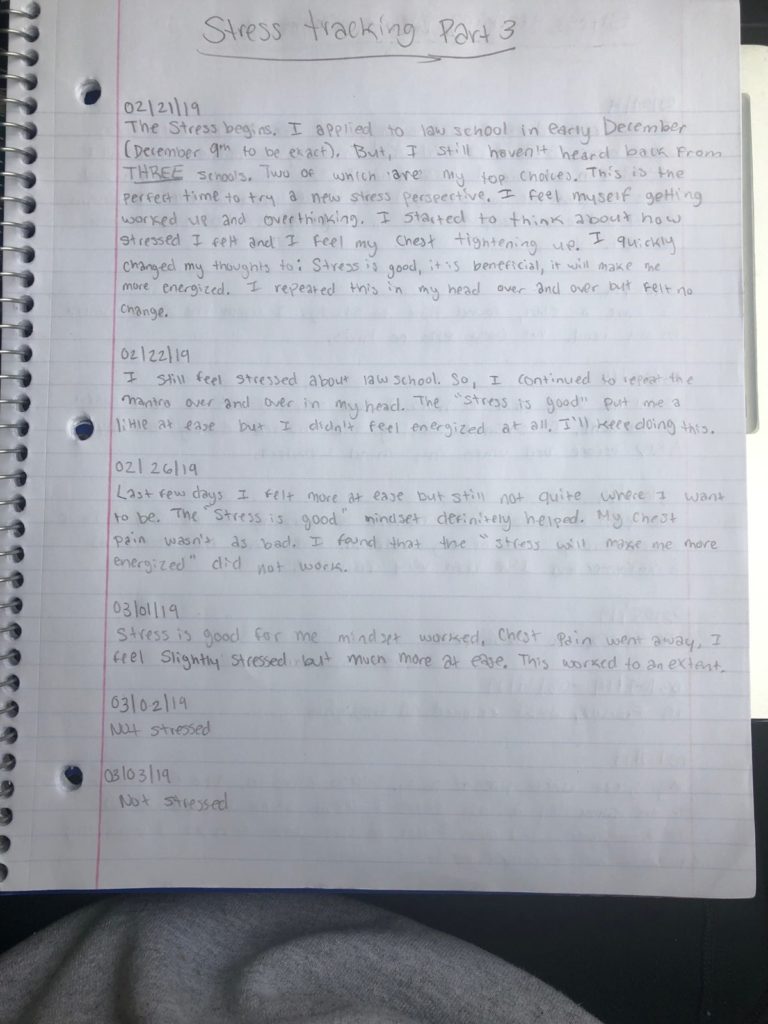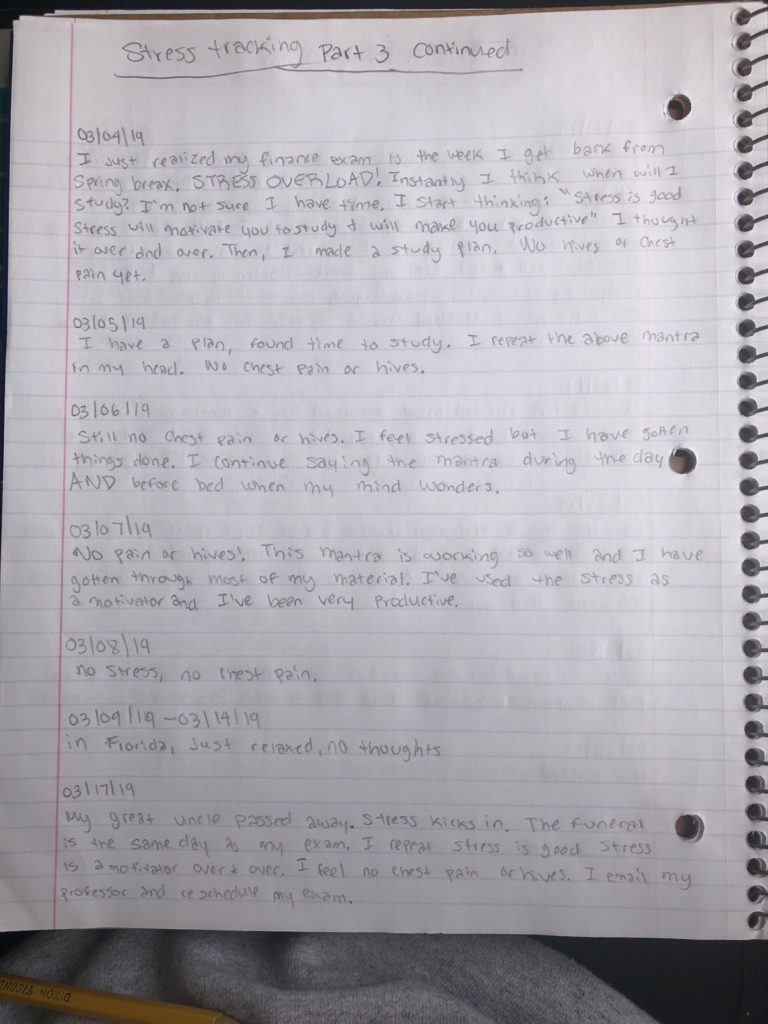OK so I read the book The Upside of Stress by Kelly McGonigal and let me tell ya when I first read the title, I did not think there was an upside of stress. But boy was I wrong. Now, when I first cracked this book open, I thought it was just going to discuss the benefits of stress itself. However, I was pleasantly surprised when it discussed mindset instead. Typically, my mindset is not a great one when it comes to stress. I get frustrated, break out in hives, and get massive chest pain when I am stressed. AND all I can think about is how much stress sucks. The negative effects I get from stress is the reason I chose this book. Prior to choosing a book, I didn’t have a specific goal in mind. Once I chose a book, my goal original goal of this project was to be less stressed. Once I started reading that goal changed to being able to handle stress better. This goal is extremely relevant for me considering I will be attending law school next year, the stress of all stresses.
Alright, let’s get into the nitty gritty of this project. Like I said above, the main thing the booked talked about was mindset. Specifically, it discussed that your mindset is everything in stress. Mindset is literally what causes the negative (physical and mental) effects of stress; basically, it’s a self-fulfilling prophecy. It talked pages and pages on how mindset effects everything… So, what do I do with this information? I kept reading. Ah here we go: changing your mindset. The first strategy the book suggests is acknowledging your mindset about stress. Prior to reading, I never really thought about my stress mindset. So, I thought this was a good place to start. I wrote down all the mindsets I could think of for a few days: ↓↓↓

This was helpful for me to be able to make a change. When my mind wonders to these thoughts, I can easily identify them and then potentially be able change my thought process. This part of my project helped me to become more self-aware. However, this was not enough. I need to be able to change my thoughts not just identify them.
Since I figured out my current stress mindset, it was now time to start changing it. Another strategy from the book was to acknowledge the positive aspects of stress. I decided that the best way to go about this was to write down anything positive I could think of about stress. My journal entries are below:

Obviously, an entire mindset change is not done overnight. But, this step a big help in the next step of changing my mindset. It gave me something to think about every time I felt negative aspects of stress or every time I had negative thoughts of stress. Essentially, this step gave me something to apply.
The final step was application. I adopted these positive aspects every time I approached stress. I tried the many mindsets I wrote down. The results are recorded below:



I found that it took trial and error in order to find something that worked for me. Once I found a new mindset I liked, I found that there were incremental benefits. I would feel myself getting stressed and I would change my negative thoughts into positive ones. I just kept repeating the positive thoughts over and over. Eventually, I found that I was not getting chest pains or hives. I also was more motivated and productive in getting done what I needed to get done.
Mindset is everything, not just in stress but in all aspects of life. This is an important takeaway that I will continue to use and think about throughout my life. I would recommend this book to anyone who doesn’t handle stress well or in a healthy way. My advice for those of you that stress easily and can’t handle it well is to read this book! Change your mindset, go through the steps, it will ultimately help you in everyday life.
